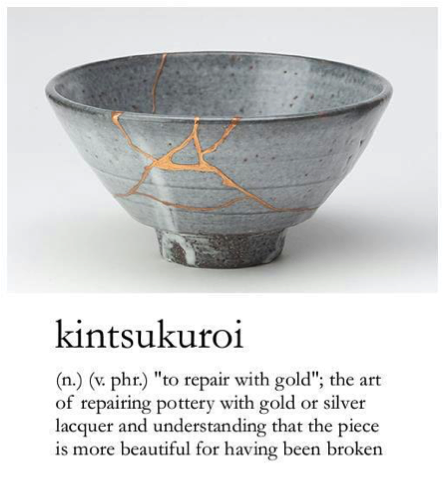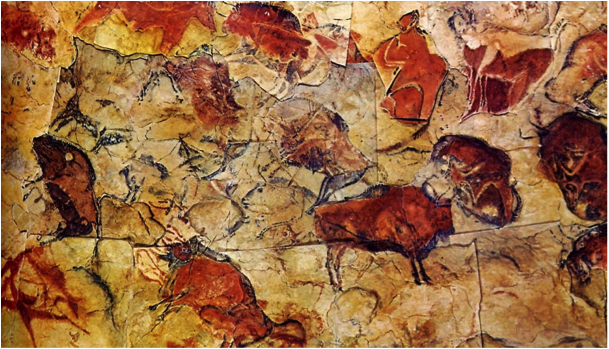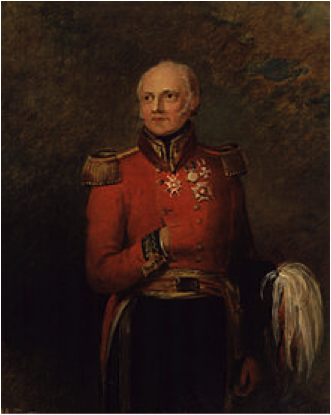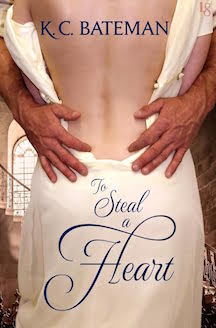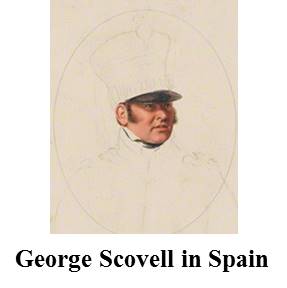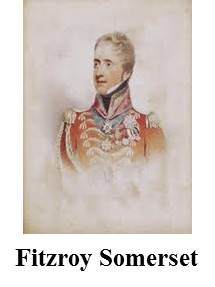Interview with Kate Bateman
Susana: What inspired you to start writing?
 Kate: I’ve always been an avid reader, especially of historical romance, but I never considered writing a book myself until around five years ago, when my husband and I moved from England to the US (with his work.)
Kate: I’ve always been an avid reader, especially of historical romance, but I never considered writing a book myself until around five years ago, when my husband and I moved from England to the US (with his work.)
I’d spent twelve years as an antiques appraiser, running with my own auction house in the UK and I also appearing on several British antiques-related TV shows as an on-screen expert, but since there’s not much use for my auctioneering skills in central Illinois, and with three small kids at home, it was a natural sidestep to use my knowledge to write historical romance.
One day I threw a very badly-written historical across the room in frustration and complained to my husband that I could have done a better job of writing it. He bet me a dollar I wouldn’t even finish a manuscript. I bet HIM a dollar I would. I’d studied English at university, so I knew I could put a coherent sentence together, and I figured well, if they can get published, why shouldn’t I have a go. . . ? At least my historical facts will be accurate. So I made the leap from avid reader to writer.
Susana: How long have you been writing?
Kate: Well, my first attempt at a historical romance (about five years ago) was set in the Italian Renaissance, which is—according to most of the publishers I approached—a tough time period to sell. So I received numerous rejections, (ouch!) but took on board the fact that editors liked my writing and kept suggesting that I write a regency romance to appeal to a larger readership. So I wrote a regency – the first book in my ‘Secrets and Spies’ series: To Steal A Heart.
I entered a couple of RWA contests, finalled in several, and from that I got a full MS request from my now-editor at Random House, and was subsequently offered a three- book deal. That was in 2015. My first book, To Steal A Heart, came out in February 2016. Book two in the series – A Raven’s Heart—is out this month, on 18th October, and book three, A Counterfeit Heart will be out in May next year.
Susana: What advice would you give to writers just starting out?
Write the books you want to read, and don’t try to copy someone else’s style because you think it will sell—it will come across as forced. I love reading about capable, intelligent heroines, so I to write about ‘historical girls with cool skills’. I also like to highlight the fact that Regency-era romances don’t all have to be set in London ballrooms. There’s a whole world of interesting places out there and many of my ideas come from real-life historical people and events.
My heroines are always feisty, witty, and more than a match for the men in their lives. Unofficially, I describe them as ‘bad-asses in bodices’ or ‘kick-asses in corsets’! To Steal A Heart, features a tightrope-walking thief and the French / British double agent who needs her skills for a prison-break heist. A Raven’s Heart has a code-breaking heroine and the cynical spy assigned to keep her safe. Book three, A Counterfeit Heart, (out next year) has a forger heroine with a dubious moral compass and a suitcase full of fake money… You get the idea!
And I’d also say to new writers: you can always improve your writing. The best thing I ever did was join my local RWA (Romance Writers of America) local chapter and attend conferences and writer events. It helped me connect with other authors whose support, encouragement, teaching, and constructive criticism have been invaluable. I’m always looking for new ways to better my craft.
Susana: Are you a plotter or a pantser?
Kate: I’m a little bit of both, but my natural inclination is pantser. I hate plotting. As my engineer-husband will tell you, I hate organizing, timetables, and planning, but I know it’s just asking for trouble to start writing a book with no idea of your overall story arc, or major plot points. So every time I come to plot a new book I pretend to myself that I’m just ‘jotting down ideas’. I keep a notebook and write down a couple of key scenes, character traits, or snatches of dialogue. I type them up. I work out the order they have to go in to make sense. I work out what scenes I need to slot in between the big scenes to join them together. And hey-presto! It’s turned into an outline / plot without me noticing! By the time I’ve turned all my scribbled notes into actual, readable sentences, the book’s almost half done.
Susana: Tell us something about your new release that’s not in the blurb:
Kate: OK, here are a few fun facts about A Raven’s Heart:
First, one of the themes I play with in A Raven’s Heart concerns internal and external scars. Heloise has a scar on her face which she believes makes her unattractive. Raven’s scars are all on the inside. He thinks he’s too emotionally damaged to love. In this respect they’re opposites—and perfect for one another; they both see past the damage and find something to love underneath.
In one of my favorite scenes Raven lets slip how much he cares for Heloise by referring to the ancient Japanese art of Kinstukuroi. It’s the use of gold to repair a broken piece of pottery, with the understanding that the piece is more beautiful for having been broken and lovingly repaired. I thought that was such a romantic idea that I had to include it in a book. Ostensibly Raven’s discussing his mother’s favorite piece of porcelain, but we know he’s really talking about Heloise.
Secondly, A Raven’s Heart is set mainly in Spain and the descriptions of the landscape and architecture all come from personal experience. I love traveling, and I was lucky enough to have spent quite a bit of time in Spain as a child. The descriptions of the taste of carobs and pomegranates come from experience! I hope my affection for the country shines through and gives those who’ve never been there a hint of what it’s like. I make Pinterest boards for all my books, so if readers are interested in seeing where I get my inspiration they can take a look: https://www.pinterest.com/kcbateman1/a-ravens-heart-raven-and-heloise-spanish-peninsula/
In the story Heloise goes to visit some prehistoric cave art in the caves near the Spanish village of Altamira. These really exist and the only artistic license I took with the story is that the caves weren’t ‘officially’ discovered or made public until a few years later than 1816. I like to think that the locals could have been aware of the existence of the caves, and the art, but might have been unaware of the importance of them from an anthropological standpoint. There’s no reason to suppose they wouldn’t have shown interested, if eccentric, foreigners like Heloise their local treasure. . .
Here’s an image of the wonderful prehistoric / Neolithic art that can be found in the Altamira caves:
And here is a link to the Wikipedia page:
https://en.wikipedia.org/wiki/Cave_of_Altamira
Thirdly, lots of events in my stories have a basis in real, historical events. For example, A Raven’s Heart features a proposed prisoner swap between the French and the English. In my research, I found evidence for this surprising – if unusual – wartime practice; In 1813, Soult and Wellington agreed to an exchange of three Frenchmen for one Englishman and two Spaniards, a plan agreed by Napoleon.
Fourthly, the heroine in A Raven’s Heart, Heloise, is a talented codebreaker for the British, and in the book she and Raven get to meet her codebreaking idol, George Scovell. Major Scovell, later General Scovell, was is real historical person, and he played a crucial role in cracking the French codes and ensuring a victory for Wellington and his troops in the Peninsular campaign.
Here he is:
For those who would like to learn more about this interesting man and his achievements, his Wikipedia entry is fascinating! Sometimes truth is even greater than fiction. https://en.wikipedia.org/wiki/George_Scovell
Susana: What are you currently working on?
Kate: I’m finishing up book three in this Secrets and Spies trilogy, A Counterfeit Heart, which and will be out early next year (May 2017). The heroine, Sabine de la Tour, is also known as ‘Philippe Lacorte,’ the elusive, brilliant French forger. She meets her match in aristocratic spy Richard Hampden—Heloise’s eldest brother.
I’m having a lot of fun with these two. Sabine arrives in England with a suitcase full of counterfeit money. An honest woman would simply destroy the evidence of her crimes. An honest woman would never blackmail her handsome pursuer into paying for her co-operation. But Sabine’s never been all that good at being good…
Sabine can counterfeit anything, but can she tell the difference between what’s real and what’s fake when it comes to something as important as her heart?
Susana: What are you reading now?
Kate: I’m re-reading a couple of my favorite authors on my keepers shelf to remind me what good writing looks like – as inspiration! I’ve just finished the delightful As You Desire by Connie Brockway, whose unusual Egyptian setting I love, and the Medieval / Renaissance historical Shadowheart by Laura Kinsale. I’m now currently half way through Susan Elizabeth Phillips’s funny contemporary It had to be You…
Susana: What is your work schedule when writing?
Kate: I write for several hours every day during the week. I have three small kids, so a good day is when I drop them off at school and manage a solid block of writing before pickup. But I also think it’s really important to keep a work-life balance. You can’t stay slumped over a hot computer monitor all day, so I don’t let myself feel guilty for having lunch out with my girlfriends or meeting up for coffee. I don’t watch a lot of TV, so I sometimes get a couple of extra hours of writing done when the kids are all in bed – accompanied by just one small glass of wine…
Susana: What is one thing your readers would be most surprised to learn about you?
Kate: A lot of people in the UK know me for my antiques-show TV work, as an appraiser, so they’re quite surprised to learn that I also write historical romance. But I have lots of not-so-well-kept secrets. For example, I almost became a ballerina, and took ballet classes for eighteen years, until I decided it was too uncertain a career and went into antiques and writing instead!
Also, I once kissed the policeman on duty outside Number 10 Downing Street after attending a reception with the British Prime Minister. And I can’t touch dry cotton wool. No, really. Even thinking about it puts my teeth on edge, like nails scraping down a blackboard!
Susana: If your publisher offered to fly you anywhere in the world for a research project, where would you go and why?
Kate: Definitely Italy. The landscape! The food! The wine! The art! I’d choose to go stay in a massive crumbling Italian castle perched on the edge of a cliff with a view of the Amalfi Coast and a lovely garden scattered with good-looking Italian groundsmen and gardeners, of course! The fact that I don’t speak Italian would only be a minor inconvenience. I’d go and wander round all my favorite Tuscan haunts, like Siena and Florence, looking for antiques, then I’d watch the film A Room with a View, accompanied by a fabulous coffee and a decadent dessert like tiramisu.
Susana: What do you want people to take away from reading your books?
Kate: That not all Regency-era romances are set in London ballrooms and country houses! There’s a whole world out there to explore – even if it’s only within the pages of a book as an armchair traveler – and lots of fascinating chapters of history to discover. My heroines are intelligent, witty, independent women who are more than a match for their men. Hopefully readers will continue to enjoy the worlds and characters I create and want to read more!
Susana: What has been your biggest adventure to date?
Kate: That’s a tough question! Having my three kids has certainly been an adventure – the little monsters definitely keep me on my toes.
I also love traveling and I’ve been lucky enough to have had several amazing adventures in that respect. I’ve watched the stars from a Touareg tent in the middle of the Morroccan desert, I’ve survived white water rafting on the mighty Zambezi river in Zimbabwe, and trekked to huge reclining buddhas in Thailand. I’ve done some epic road trips across America with my family since moving here, including the Grand Canyon, the Rockies, Yosemite, Death Valley, and the Utah national parks.
But I think my biggest adventure has to be leaving behind my first career — as an antiques appraiser and auctioneer in England — and finding another career I love just as much; that of historical romance author. My path to publication has been one huge adventure, sometimes frustrating, disappointing and nerve-wracking, but also fun, fascinating and exhilarating. I’ve met some wonderful people, made some lifelong friends, and learned so much. I hope to keep writing and to stay in the wonderful world of romance for a very long time!
Susana: Who gave you the writing advice that sticks with you to this day?
Kate: I always remember the Nora Roberts quote about the importance of having a central conflict in your stories. She said something like ‘If your hero’s a fire investigator, your heroine had better be an arsonist!’
Also, and I don’t know who said it, but I have a post-it note taped above my computer with the fundamental ABC’s of writing: Apply Butt to Chair!
Susana: What one modern convenience you could not live without?
Kate: A kettle and teabags. Life’s just not worth living without a nice cup of tea!
About A Raven’s Heart
August 1815. The war with France is officially over, Napoleon’s an exile on St Helena, but Europe is still a very dangerous place to be. . .
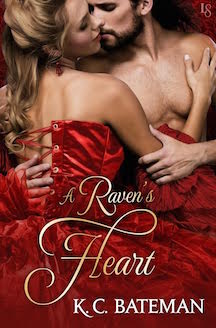 Kidnapped and held for ransom at nineteen, ducal heir William Ravenwood knows the only person he can rely on is himself. Now part of a spy ring that includes his friends Nicolas and Richard Hampden, he’s the smuggler known as The Raven, a ruthless agent who specializes in rescuing hostages and prisoners of war from captivity. Raven longs to discover the fate of his colleague, Christopher ‘Kit’ Carlisle, who’s been missing, presumed dead, for over two years. He’s also equally determined to stay away from the one thing he knows is dangerous to his health—the bane of his life, his best friends’ infuriating little sister, Heloise.
Kidnapped and held for ransom at nineteen, ducal heir William Ravenwood knows the only person he can rely on is himself. Now part of a spy ring that includes his friends Nicolas and Richard Hampden, he’s the smuggler known as The Raven, a ruthless agent who specializes in rescuing hostages and prisoners of war from captivity. Raven longs to discover the fate of his colleague, Christopher ‘Kit’ Carlisle, who’s been missing, presumed dead, for over two years. He’s also equally determined to stay away from the one thing he knows is dangerous to his health—the bane of his life, his best friends’ infuriating little sister, Heloise.
Heloise is a brilliant code breaker, one of the English government’s most valuable assets. She’s loved Raven for years, but considering that he rejected her at sixteen, before her face was scarred rescuing her brother from an icy river, she’s certain he doesn’t want her now, despite his outrageous flirting.
But when Heloise decodes a message that proves Kit is alive and a prisoner in Spain, Raven realizes she’s in grave danger. With French agents determined to silence her, he’ll do whatever it takes to keep her safe, even if that means taking her to Spain with him as an unwilling hostage.
As they face French deserters and Spanish freedom fighters, Raven and Heloise try to ignore the simmering attraction that’s been building between them for eight long years. Heloise might be scarred outwardly, but Raven’s wounds are all on the inside. He knows he’s not worthy of her love—a shadowed Hades pining for sun-kissed Persephone—but he’s not above showing her passion for the short time they’re together. Protecting her from danger will be a challenge; protecting her from desire will be pure agony…
Amazon • Barnes & Noble • iBooks • Kobo • Google Play • ARe
Excerpt
Chapter 1
England, June 1816
“I’m a spy, not a bloody nursemaid!”
William de l’Isle, Viscount Ravenwood, glared across the desk at his mentor, Lord Castlereagh.
The older man shook his head, supremely unmoved by his outburst. “Miss Hampden needs immediate protection. Someone’s targeting my code breakers and whoever killed Edward could also have discovered her identity. I can’t afford to lose her, too.”
Raven narrowed his eyes. “Use another agent.”
Castlereagh gave him one of those level, penetrating looks he so excelled at. “Who? Neither of her brothers are here; Nic’s in Paris, and Richard’s following a lead on that French forger he’s been after for months. Who else is left?” He pinched the bridge of his nose. “We’ve lost too many good men. First Tony got himself killed in France, then Kit disappeared. There’s been no news of him for months.”
Raven frowned. He refused to consider the distasteful probability that his friend was dead. Kit was like him, a master of survival. He could be deep undercover. But with every week that went by with no word it became harder and harder to stay positive.
“And now another good man, Edward Lamb, had been murdered,” Castlereagh sighed. “I don’t want Miss Hampden to be next.”
The older man was a master of applying just the right amount of pressure and guilt. He hadn’t made it to head of the Foreign Office without knowing how to manipulate people.
“You think I should entrust her to a less competent operative?” Castlereagh mused softly. “You’re not burdened by false modesty, Ravenwood. You know you’re the best I have. I was hoping you’d use your exceptional talent for survival to keep Miss Hampden alive, too.”
Raven sighed, well aware he was being backed into a corner. If it had been anyone else he wouldn’t have hesitated. But Heloise Hampden was the fly in his ointment. The spoke in his wheel.
A total bloody menace.
Hellcat Hampden had been the subject of his guilty daydreams for years. What had started out as adolescent musings had matured into fevered erotic fantasies that showed absolutely no sign of abating. He’d told himself the attraction was because she was forbidden, tried to lose himself in other, far more available women. Nothing had worked. And while he’d rarely paid much attention to the monotonous sermons preached by the clergy, he was fairly sure there was something in the bible that said “thou shalt not covet thy best friend’s little sister.” Or words to that effect.
He was the last person she should be entrusted to. He’d sworn to stay away from her. Had avoided her quite successfully—give or take a few blessedly brief skirmishes—for the past six years. Hell, he’d traveled to the far corners of war torn Europe to try to forget her.
And now here he was, drawn back to her by some malevolent twist of fate.
As if his life wasn’t cursed enough already.
Over the past few years they’d settled into an uneasy, albeit barbed, truce; it was a sad reflection on his twisted nature that he preferred sparring with her to holding a reasonable conversation with anyone else.
His blood thrummed at the prospect of seeing her again and he smiled in self-directed mockery. Few things increased his heartbeat anymore. In combat he was a master of his emotions, sleek and deadly and efficient. Fighting barely elevated his pulse. He could kill a man without breaking a sweat. But put him ten paces away from that slip of a girl and a furious drummer took up residence in his chest, battering away against his ribs.
He shook his head. Being near her was a torture he both craved and abhorred, but he had a duty to keep her safe. A duty to her family, to Castlereagh, to the whole damn country. Much as he’d like someone else to deal with her, he didn’t trust anyone else. She was his to torment.
Castlereagh, the old devil, smiled, as if he already sensed Raven’s grudging acceptance. “That’s settled, then. She’s safe at home right now. You can go over and get her in the morning.”
He rose and strode to the door of the study, then flashed an amused glance at Raven’s immaculate evening attire and the mask resting on the desk. “I apologize for interrupting your evening, Ravenwood. I’ll leave you to your entertainments.”
Link to longer excerpt from A Raven’s Heart:
http://www.kcbateman.com/books/sneak-peeks/
In A Raven’s Heart, I hint that Raven and Heloise are like the Greek gods Hades and Persephone – Hades kidnaps Persephone and takes her down to the Underworld, but the two end up falling in love and learning to compromise.
My question to readers is: If you could host a dinner party and include any couple—they can be real historical or fictional/mythological, who would you choose? Anthony and Cleopatra? Elizabeth and Darcy? Cathy and Heathcliff?
Three random commenters will win a free ebook download of To Steal a Heart, Book 1 in my Secrets & Spies series.
About the Author
Kate Bateman (writing as K. C. Bateman) wrote her first historical romance in response to a $1 bet with her husband who rashly claimed she’d ‘never finish the thing.’ She gleefully proved him wrong with a historical set in the Italian Renaissance. Now writing for Random House Loveswept, her latest Secrets & Spies Regency-era trilogy features her trademark feisty, intelligent heroines, wickedly inappropriate banter, and heroes you want to alternately strangle and kiss—all mixed up in the intrigue and turmoil of the Napoleonic wars.
When not traveling to exotic locations ‘for research’, Kate leads a double life as a fine art appraiser and on-screen antiques expert for several TV shows in the UK. She splits her time between Illinois and her native England and writes despite three inexhaustible children and a husband who has flatly refused to read any of her books ‘unless she hits the NY Times Bestseller list.’ It is—naturally—her fervent desire to force the semi-illiterate, number-loving cynic to do so. He still owes her that dollar.
Kate loves to hear from readers.
